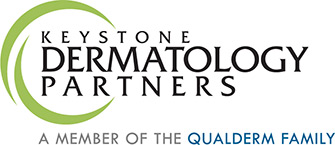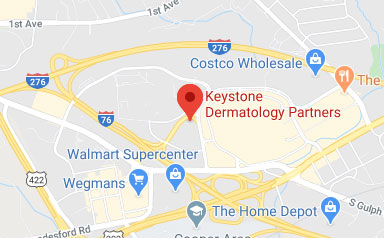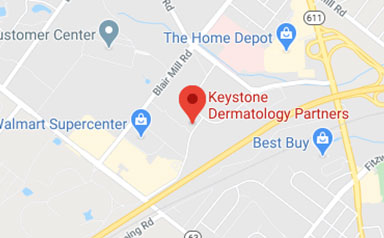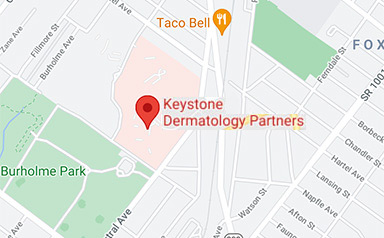
Pityriasis rosea is a very common skin disease that causes a patchy pink-red rash that may last 6-8 weeks before resolving on its own. The condition may be related to a viral infection. Due to its appearance, pityriasis rosea may be confused as eczema or ringworm. It is common with people of all ages and skin color but is most likely to occur between the ages of 10-35 and during pregnancy. (If you do develop this rash during pregnancy, it is important to let your doctor know right away).
The first sign of pityriasis rosea is called a “mother” patch and it tends to be larger (2-3-inch diameter) and appear approximately two weeks before the other rashes appear. Daughter patches tend to be smaller in size and often appear on the chest, back, arms, and legs. These patches can also form on the neck and face, sometimes even in the mouth. If many patches begin to form, they may assume a “Christmas tree” pattern on the back. Patches may be scaly and itch.
As noted above, the rash will often resolve on its own within 2 months. Symptoms from itch may be addressed with the use of over-the-counter anti-histamines and anti-itch creams. Some prescription anti-viral medications may also speed clearance of the rash.
Dr. Perlis is an amazing dermatologist
Dr. Perlis is an amazing dermatologist as well person. I moved to this area from out of state and his office made everything a very mindless transition. He sits down and explains everything soup to nuts and you never feel rushed. Very down to earth doctor which is difficult to find. His nurses and office staff are very pleasant as well.
Matt G
 Pityriasis rosea is a very common skin disease that causes a patchy pink-red rash that may last 6-8 weeks before resolving on its own. The condition may be related to a viral infection. Due to its appearance, pityriasis rosea may be confused as eczema or ringworm. It is common with people of all ages and skin color but is most likely to occur between the ages of 10-35 and during pregnancy. (If you do develop this rash during pregnancy, it is important to let your doctor know right away).
The first sign of pityriasis rosea is called a “mother” patch and it tends to be larger (2-3-inch diameter) and appear approximately two weeks before the other rashes appear. Daughter patches tend to be smaller in size and often appear on the chest, back, arms, and legs. These patches can also form on the neck and face, sometimes even in the mouth. If many patches begin to form, they may assume a “Christmas tree” pattern on the back. Patches may be scaly and itch.
As noted above, the rash will often resolve on its own within 2 months. Symptoms from itch may be addressed with the use of over-the-counter anti-histamines and anti-itch creams. Some prescription anti-viral medications may also speed clearance of the rash.
Pityriasis rosea is a very common skin disease that causes a patchy pink-red rash that may last 6-8 weeks before resolving on its own. The condition may be related to a viral infection. Due to its appearance, pityriasis rosea may be confused as eczema or ringworm. It is common with people of all ages and skin color but is most likely to occur between the ages of 10-35 and during pregnancy. (If you do develop this rash during pregnancy, it is important to let your doctor know right away).
The first sign of pityriasis rosea is called a “mother” patch and it tends to be larger (2-3-inch diameter) and appear approximately two weeks before the other rashes appear. Daughter patches tend to be smaller in size and often appear on the chest, back, arms, and legs. These patches can also form on the neck and face, sometimes even in the mouth. If many patches begin to form, they may assume a “Christmas tree” pattern on the back. Patches may be scaly and itch.
As noted above, the rash will often resolve on its own within 2 months. Symptoms from itch may be addressed with the use of over-the-counter anti-histamines and anti-itch creams. Some prescription anti-viral medications may also speed clearance of the rash.





